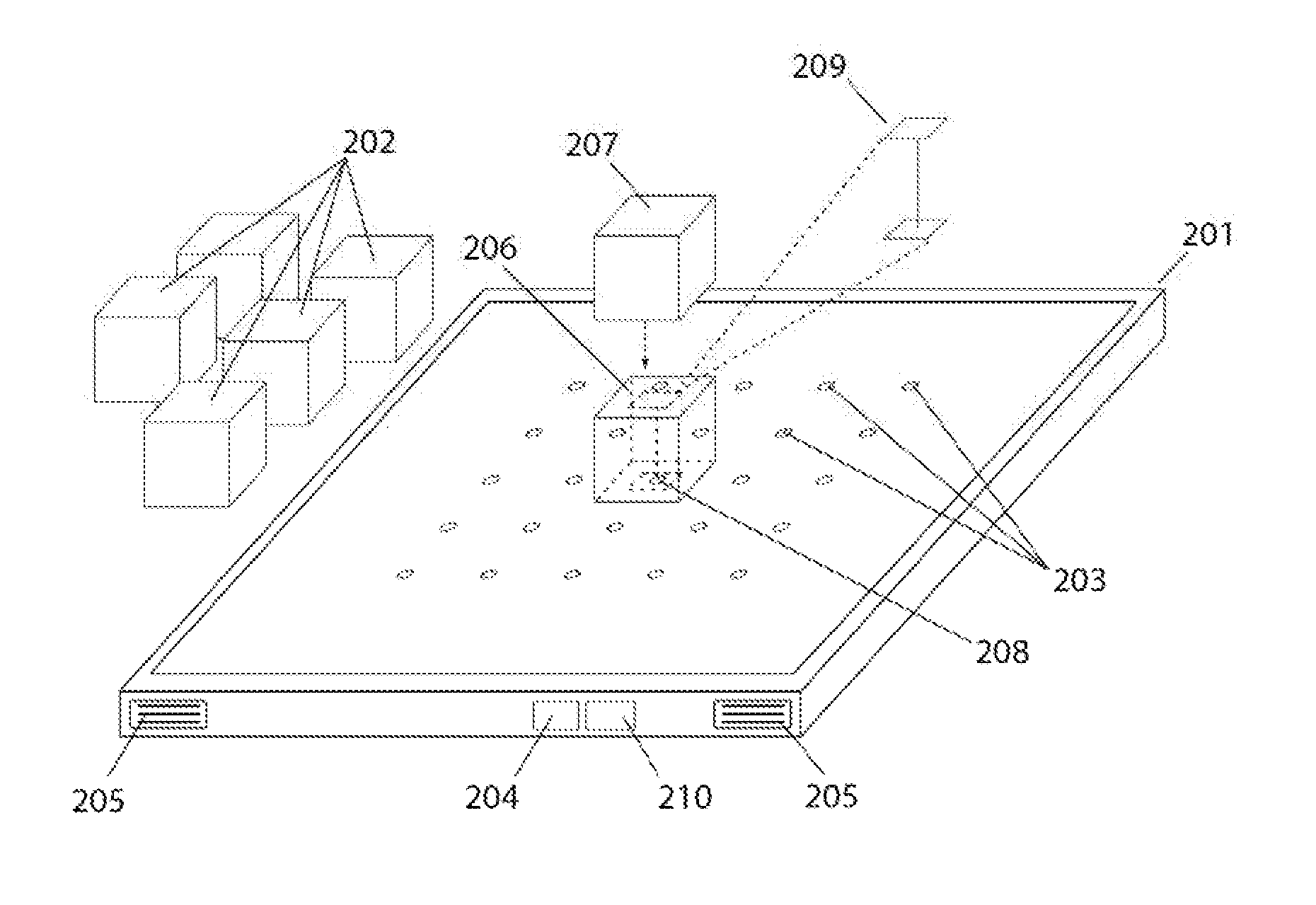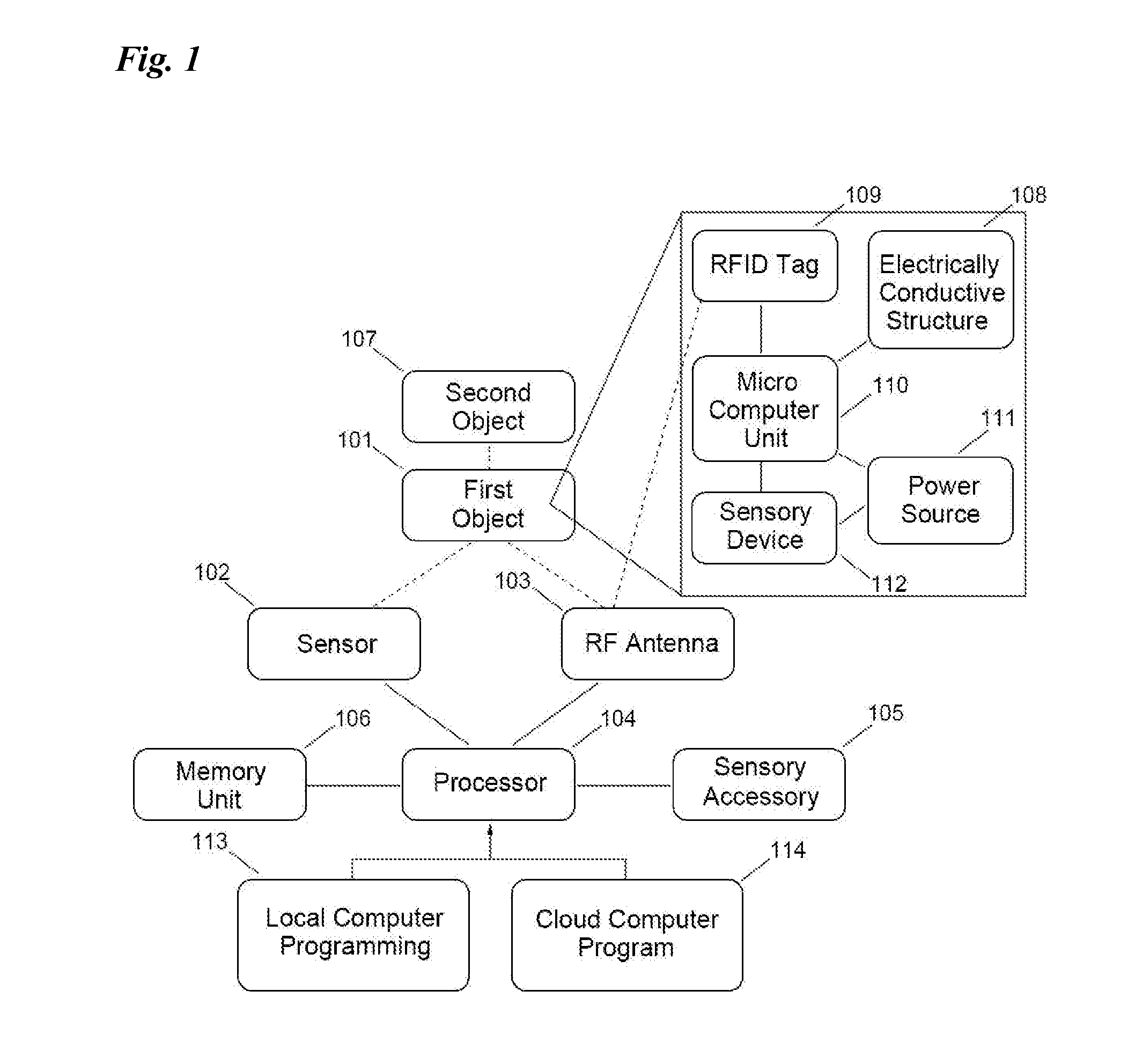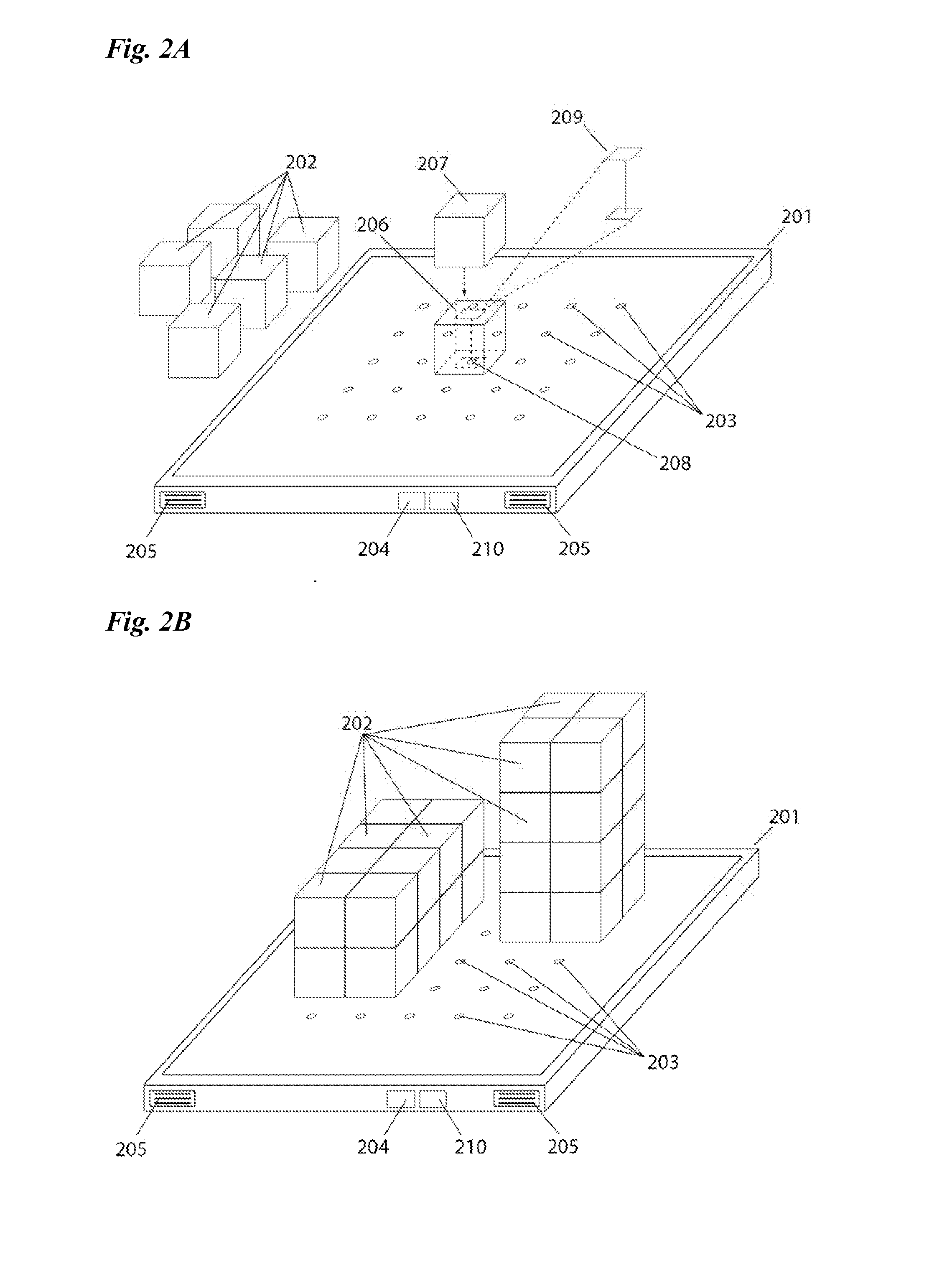System and method for recognizing objects placed together using sensors
a technology of capacitance sensors and objects, applied in the field of system and method for recognizing objects placed together using capacitance sensors, can solve the problems of lack of three-dimensional nature of displays, little improvement on original designs, and inability of toy manufacturers and educators to take advantage of advancements in technology
- Summary
- Abstract
- Description
- Claims
- Application Information
AI Technical Summary
Benefits of technology
Problems solved by technology
Method used
Image
Examples
Embodiment Construction
[0026]While the present invention will be described using specific embodiments, the invention is not limited to these embodiments. People skilled in the art will recognize that the system and method of the present invention may be used in many other applications. The present invention is intended to cover all alternatives, modifications and equivalents within the spirit and scope of invention, which is defined by the apprehended claims.
[0027]Furthermore, in the detailed description of the present invention, specific details are set forth in order to provide a thorough understanding of the present invention. However, it will be obvious to one of ordinary skill in the art that the present invention may be practiced without these specific details. In other instances, well known methods, procedures, components, and circuits are not described in details to avoid unnecessarily obscuring a clear understanding of the present invention.
[0028]In addition, while a sensor system making use of c...
PUM
 Login to View More
Login to View More Abstract
Description
Claims
Application Information
 Login to View More
Login to View More - R&D
- Intellectual Property
- Life Sciences
- Materials
- Tech Scout
- Unparalleled Data Quality
- Higher Quality Content
- 60% Fewer Hallucinations
Browse by: Latest US Patents, China's latest patents, Technical Efficacy Thesaurus, Application Domain, Technology Topic, Popular Technical Reports.
© 2025 PatSnap. All rights reserved.Legal|Privacy policy|Modern Slavery Act Transparency Statement|Sitemap|About US| Contact US: help@patsnap.com



